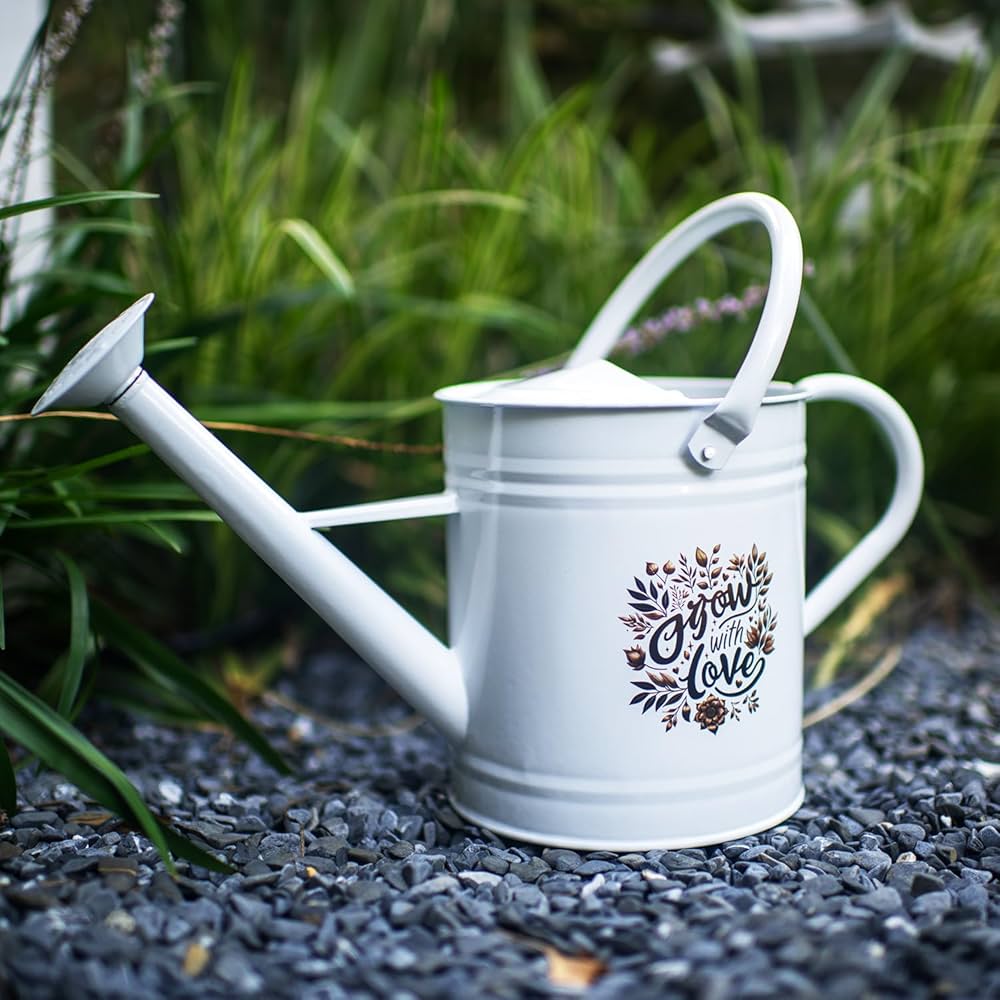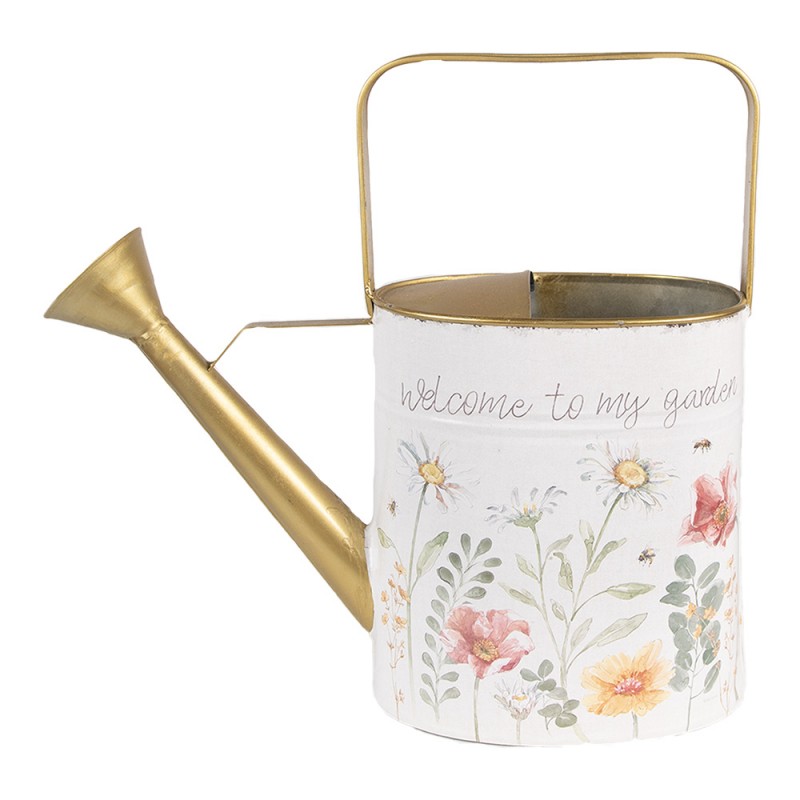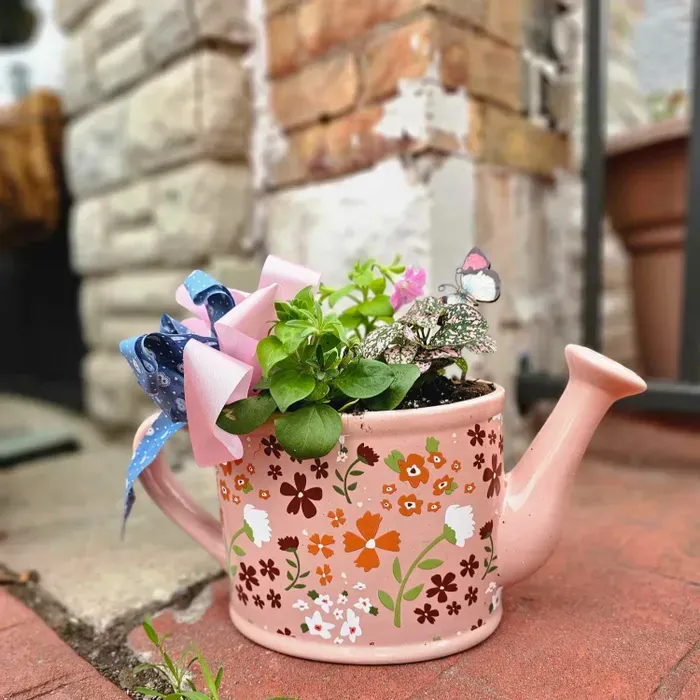The Importance of Proper Watering for Indoor Plants
Ensuring your indoor plants receive the right amount of water is crucial for their health. Over-watering can lead to root rot, a common issue that hinders plant growth. Under-watering, on the other hand, can dry out the roots and weaken the plant. A decorative watering can not only add style to your plant care routine but also help you water effectively. It’s important to understand each plant’s unique watering needs. The right watering can design can offer precise control over the water flow. This control enables you to reach the soil directly without splashing and wetting the leaves, which can cause fungal infections.
An appropriate watering can with a long spout is ideal for targeted watering, reducing water wastage. Using a decorative watering can also serves as a visual reminder to care for your plants regularly. Keep in mind that the type of indoor plant you have can dictate the kind of watering can you might need. For example, succulents require less frequent watering than tropical plants, which may need a more consistent watering schedule. Balancing beauty with functionality, a decorative watering can be a perfect tool for maintaining the health and vitality of your indoor plants.
Classic Watering Can Designs and Their Appeal
Classic watering can designs have stood the test of time due to their functional elegance. These designs typically feature a balanced combination of a curved handle and a long spout. The iconic shape is not just for looks; it provides an ergonomic grip for ease of watering. Often made from materials such as galvanized steel or copper, these cans offer durability. The rustic aesthetic of a classic decorative watering can serves as a nod to traditional gardening.
In addition, the patina that develops on metal cans over time adds a touch of antiquity. It appeals to those who enjoy vintage or rustic home decor. Moreover, many plant enthusiasts believe traditional designs blend seamlessly into both indoor and outdoor settings. This timeless appeal makes the classic decorative watering can a popular choice for gardeners. Its simplicity does not clash with the natural beauty of the plants. Also, a classic can is often a go-to for those seeking a reliable and understated tool that gets the job done. Using such watering cans not only ensures efficient hydration for your plants but also adds a decorative element to your plant care routine.
Modern Watering Cans for a Contemporary Look
Modern watering cans offer more than just utility; they enhance the aesthetic of your indoor garden. These cans showcase sleek lines, bold colors, and innovative designs that fit well in contemporary spaces. Unlike classic styles, modern decorative watering cans often emphasize minimalism and functionality. Manufacturers use materials such as stainless steel, plastic, or recycled materials to capture a clean, sophisticated vibe.
Distinctive Shapes and Designs: The modern decorative watering can might come in unexpected shapes. Some are cylindrical, others might be rectangular. The handles and spouts might feature artistic curves or geometric angles. These designs can double as decor when they’re not in use.
Vibrant and Neutral Colors: Color is a significant aspect of modern cans. They are available in an array of colors, ranging from bright, eye-catching hues to understated, chic shades. It allows gardeners to match their watering can with their interior design palette or plant pots.
Combining Form and Function: High functionality is key in modern designs. They often come with detachable spouts for different watering pressures and ergonomic handles for comfortable grip. Designers integrate these features without compromising the watering can’s sleek silhouette.
Innovative Materials: The modern decorative watering can is also about materials. Designers often choose durable and lightweight alternatives over traditional metals. Some modern cans are made to be environment-friendly, suggesting a shift towards sustainability in gardening tools.
Multifunctional Accessories: Many modern cans include additional features such as measurement markings for precise watering, or in-built filters to prevent debris from clogging the spout. These accessories promote a more efficient watering routine.
In conclusion, when you choose a modern watering can, you’re selecting a tool that meets your watering needs while reflecting your style. The modern decorative watering can is a statement piece that stands out among classic options and provides an effortless blend of form and function.
Decorative Watering Cans as Functional Art Pieces
Choosing a decorative watering can that functions as an art piece is not just practical; it adds aesthetic value to your plant care. These watering cans become a focus in your indoor space, hinting at your personal style and love for gardening. When not in use, they can sit on a shelf or table, merging with your home’s decor as a standalone sculpture. Many owners feel proud to display these cans as part of their interior landscape.
Statement Designs: The unique designs of these decorative watering cans turn them into conversation starters. An artistic watering can might feature intricate patterns, bold graphics, or hand-painted details that showcase your personal taste.
Material Craftsmanship: Craftsmanship is central to these art pieces. The materials used, such as hand-blown glass or custom-forged metal, bring a high-quality and unique touch that mass-produced items cannot match.
Versatility in Use: Despite their artfulness, functional art watering cans are crafted to be fully functional. This ensures you can water plants with ease while enjoying the beauty of your can.
Reflecting Personal Aesthetics: Whether you favor a bohemian, minimalist, or avant-garde style, there’s a decorative watering can to suit your aesthetic. It’s the perfect way to infuse your personality into the daily ritual of plant maintenance.
By selecting a watering can that is both a functional tool and a piece of art, you create a more engaging and visually pleasing plant care experience. It’s about celebrating the beauty of the everyday and bringing joy to what might once have been considered a mundane task.
Eco-Friendly Watering Can Options
In the pursuit of sustainability, eco-friendly watering can options have emerged. These cans support green living and reduce environmental impact. Made from biodegradable materials or recycled products, they help gardeners maintain eco-conscious practices.
Biodegradable Materials: Some eco-friendly cans are crafted from natural materials that decompose over time. For instance, bamboo, which is fast-growing and sustainable, is a popular choice. It breaks down after its useful life, leaving minimal environmental footprint.
Recycled Plastics: Manufacturers are repurposing plastic waste to create watering cans. This approach keeps plastics out of landfills and oceans. Plus, it reduces the need for new plastic production.
Upcycled Designs: Creative minds turn old items into unique watering cans. Old bottles or containers get a second life as a decorative watering can. This not only saves resources but also adds a personal touch to your gardening tools.
Water Conservation Features: Some eco-friendly cans include features that promote water conservation. They might have nozzles that control water flow or systems that reuse household water.
Sustainable Production Processes: The creation of the can matters as well. Brands that use solar power or other renewable energy in production are making strides. They offer products with a lower carbon footprint.
By choosing an eco-friendly decorative watering can, you contribute to a healthier planet. You also support the industry moving towards sustainable practices. Next time you’re shopping, consider options that are kind to the earth and stylish for your home.
Watering Can Materials: Pros and Cons
When selecting a decorative watering can, the material is a crucial factor to consider. Here’s a quick look at the pros and cons of various materials commonly used:
Metal Watering Cans:
Pros: Metal cans are sturdy and long-lasting. They can withstand frequent use. Their weight gives them a stable base when full, reducing the risk of tipping over. Over time, metals like copper develop a unique patina adding to their charm.
Cons: They can be heavy, especially when filled with water, making them less ideal for those with limited strength. Metal cans may rust if not properly cared for. They are also usually more expensive than plastic options.
Plastic Watering Cans:
Pros: Plastic is lightweight, making it easy to carry, even for those with less hand strength. It’s often more affordable and comes in a variety of colors.
Cons: Plastic can degrade over time, especially when exposed to sunlight, leading to cracks and leaks. Some may not like the feel of plastic or its appearance compared to metal or ceramic cans.
Ceramic Watering Cans:
Pros: Ceramic offers a classic look and can be glazed in many decorative finishes. They often have intricate designs and can serve as a decor piece.
Cons: They are fragile and can crack or break if dropped. Ceramic cans are also heavier and typically more expensive due to their craftsmanship.
Stainless Steel Watering Cans:
Pros: Stainless steel is rust-resistant and durable. It has a sleek, modern appearance and is often used in contemporary designs.
Cons: These can show water spots and fingerprints, requiring more maintenance. Like other metal cans, they can be heavier and pricier.
When choosing your decorative watering can, weigh the pros and cons of each material against your needs and style preferences. Consider durability, weight, cost, and aesthetics to find the perfect fit for your indoor plant care.
Tips for Choosing the Right Watering Can for Your Plants
Selecting the correct decorative watering can for your indoor plants involves more than just style. Here are some tips to help you make the best choice for the health of your plants and the aesthetics of your home.
Consider Plant Needs: Each plant has distinct watering requirements. Ensure the can’s size and spout design fit the needs of your plant species.
Evaluate Space: Look at your indoor space. Choose a size that is easy to handle and store in your home.
Check the Spout: Long spouts reach the base of plants with ease, preventing leaf wetness. A detachable spout can offer versatility.
Test Ergonomics: Pick it up, if possible. It should feel comfortable in your hand, even when full.
Think About Durability: A sturdy can lasts longer. Metal can be strong, but also heavy. Plastic is light but may not last as long.
Assess Capacity: A larger capacity means fewer trips to refill, but it will be heavier. Balance convenience with comfort.
Match Your Decor: A decorative watering can should also fit your room’s style. Choose one that complements your interior.
Look for Extra Features: Measurement markings and filters are helpful for precise and clean watering.
By keeping these tips in mind, you’ll find a watering can that serves as a practical tool and enhances your home decor. Remember, the best choice will blend functionality with personal taste, making plant care a pleasure.
Creative DIY Watering Can Ideas
Adding a personal touch to your gardening tools can be rewarding, and DIY watering can ideas offer just that. Here are some creative suggestions to get you started:
Repurpose Household Items: Look around for items that can be transformed. An old teapot or a milk jug can become a unique watering can with a few modifications. Drill holes in the lid for a makeshift spout.
Decorate with Paint: Give an old can a new life with a coat of paint. Use stencils to add patterns or let your creativity flow with freehand designs. Make sure to use waterproof paint.
Add Comfort to Handles: Wrapping the handle with twine or soft fabric can add comfort and style. It’s a simple change that makes a big difference in handling the can.
Create a Mosaic Look: Glue pieces of broken ceramic or glass to a plain watering can. This not only recycles but also creates a colorful masterpiece.
Incorporate Nature: Attach shells, stones, or wooden elements to your can. These can give a rustic or beachy feel to your watering routine.
Go Green with Bottles: Plastic bottles come in handy for small plants. Poke holes in the cap, fill with water, and you have an instant watering device.
By exploring these DIY options, you’re on your way to having a decorative watering can that’s both functional and expressive of your personal style.


